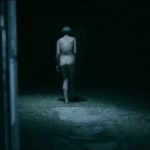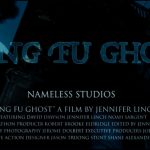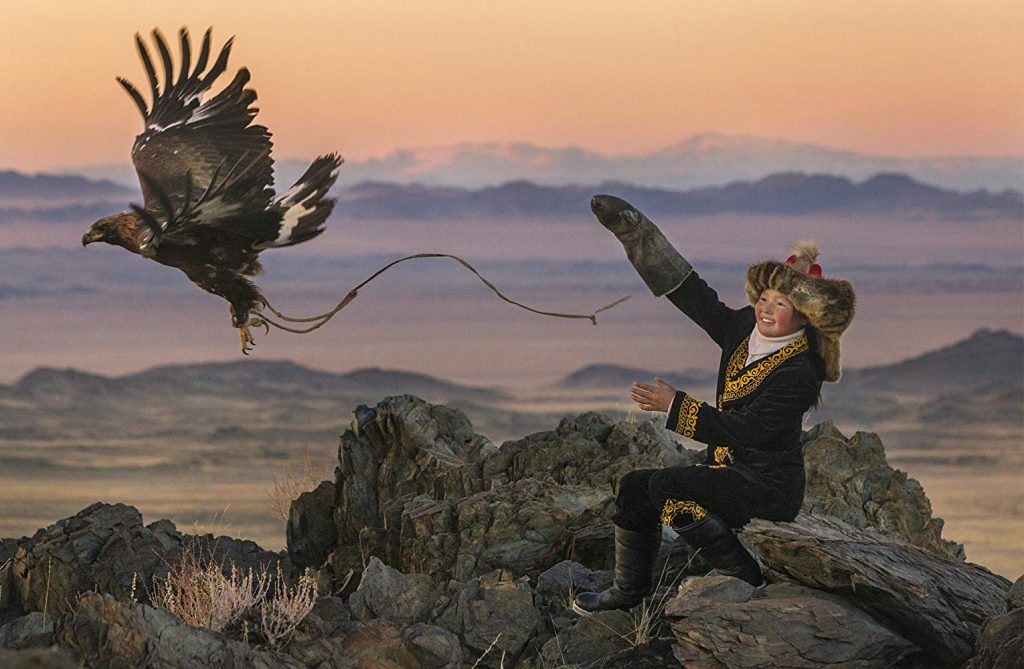
Photo by Asher Svidensky
Almost as a rule, I review only films in the genres of horror, science fiction and fantasy, as well as what we deem, with our discretion, real-world horror. The Eagle Huntress (2016, directed by Otto Bell) is none of those genres, not in the very least. It is, however, a rare and beautiful film/documentary that makes me break my own rules and review it anyway. A young girl’s epic quest to defy the odds, working against the forces of nature and cultural gender bias, makes a movie with a role model for us all. It also makes a movie well worthy of being excused from the rules. In honor of The Eagle Huntress (and all other exceptional films outside our genres), I’ve even created a new category at Space Jockey Reviews aptly titled “SJR Favorites.”
“Girls can do anything boys can do if they try.” ~ Aisholpan Nurgaiv
Aisholpan (played by the real Aisholpan Nurgaiv herself) is the young girl, main character and true “Eagle Huntress” of the film. Her broad face, sparkling eyes, and quiet confidence make her a girl you already know. An excellent student in school, with exemplary behavior, added to the rest, make her anyone’s dream child. A bit of a tomboy she is too, while still painting her nails and wearing dresses, as any more feminine girl does. Aisholpan is herself in the film, with no effort, as naturally as she is herself in the course of any day. Surprisingly, a thirteen-year-old girl from a remote area of the world, with zero experience in front of a camera, performs with perfection. Innocent, honest reactions to the real-life events being documented are genuine and authentic, never looking like “acting.” And that is the first reason The Eagle Huntress succeeds. With Aisholpan, we easily believe the story she reveals as the story of her life.
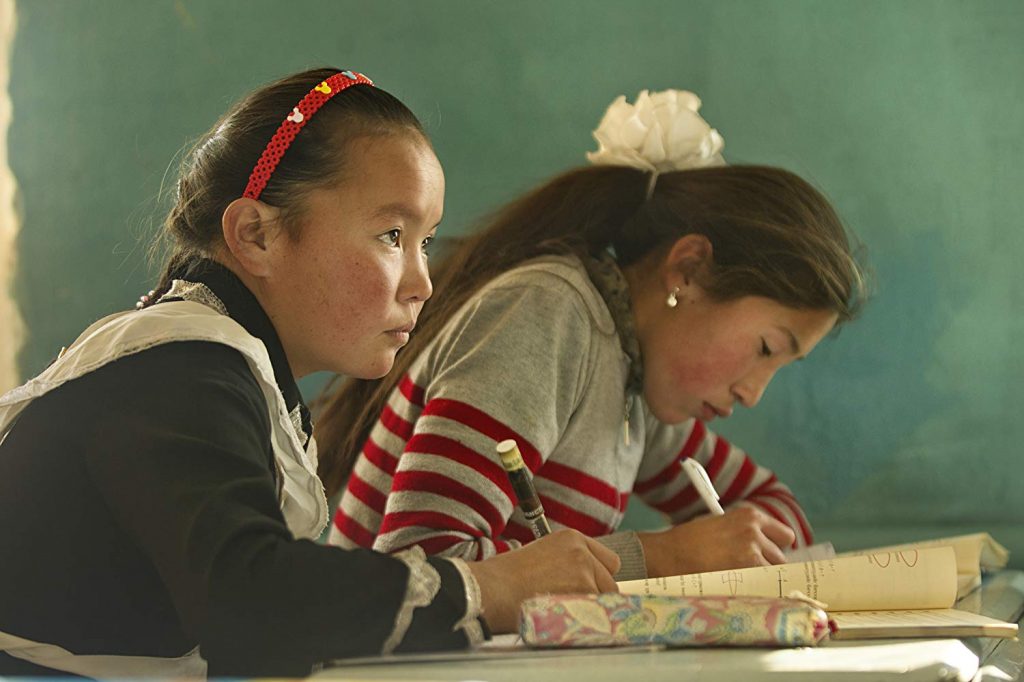
Like any other girl, Aisholpan goes to school; unlike others, she dreams of being an eagle huntress.
Every year, eagle hunters from all over Mongolia travel hundreds of miles to the country’s capital, Ulan Bator, for the annual Golden Eagle Festival and competition. There, falconry–hunting with eagles–is the skill observed. (It’s a tradition dating back thousands of years, before the time of the most famous Mongol of all, Genghis Khan himself.) Competitors at the festival are judged, in a variety of related categories, including speed, skill of the eagle, the competitor’s relationship with the eagle, and even the aesthetic presentation of the hunter’s traditional clothing.
“There is a dual cultural dynamic in the film–one that is both antithetical and analogous–exemplary as an outdated cultural perspective, yet still typical in today’s gender-equalizing world.” ~ Chris Rennirt
Aisholpan, being tomboyish as she is, and close to her father (as well as having a passion to achieve her dreams), has decided she wants to be an eagle hunter, bucking twelve generations of Khazak tradition and to do so. What has been an honor only passed from father to son is now at the pinnacle of her ambition. Aisholpan’s father, Rys Nurgaiv (Aisholpan’s real-life father and a two-time festival winner himself), is quickly his daughter’s strongest advocate, more than ready to break tradition and pass the honor from father to daugher. Resistance and vehemence from the elders of their patriarchal community does not discourage Aisholpan or her father. From this point, father goes about the loving task of teaching his daughter how to be not just an eagle hunter, but one who can win the annual eagle-hunter’s competition as the best of all. At the renowned Golden Eagle Festival, Aisholpan will face off against 70 of the greatest Kazakh eagle hunters in Mongolia. To train, she will need to ride, on horseback, with her father deep into the frigid mountains, across perilous landscapes, enduring 40 below zero temperatures. Will Aisholpan complete the thousand-year-old rite-of-passage and become the first female eagle hunter? Will Aisholpan’s passion and determination lead her to overcome generations of gender bias and stereotyping? Will the village elders and thousands of years of culture allow it, despite her best efforts?
“[Aisholpan is] a remarkable young woman…both beautiful and angelic, but also very strong.” ~ Otto Bell (Director of The Eagle Huntress)
There is a dual cultural dynamic in the film–one that is both antithetical and analogous–exemplary as an outdated cultural perspective, yet still typical in today’s gender-equalizing world. In the traditionally male-dominated society the movie shows us, men are both resistant and encouraging, in regards to what Aisholpan could (or should) achieve (or be allowed to try). The village elders are very vocal with their disapproval, insisting she should not even train to be a huntress. Women are, they say, not strong enough, instead meant to be at home cooking, making tea, and all of the typical things they expect. Meanwhile, Aisholpan’s father and grandfather inspire her with hope and courage, making her even more determined. While the men at the competition look at Aisholpan with surprised, unwelcoming expressions, most also treat her fairly, applauding her, cheering her and rewarding her when she truly deserves it. What may at first seem inconsistent and uneven, instead reveals the uniformity and developing balance of the changing world in which we live, more consistently and realistically, as it is everywhere–not just in the remote Mongolian steppes. While we can expect the father and grandfather to support Aisholpan, the willingness many elders and traditionalists to do the same, when she proves her ability, is a breathe of fresh air, as well as a lesson in world culture for viewers.
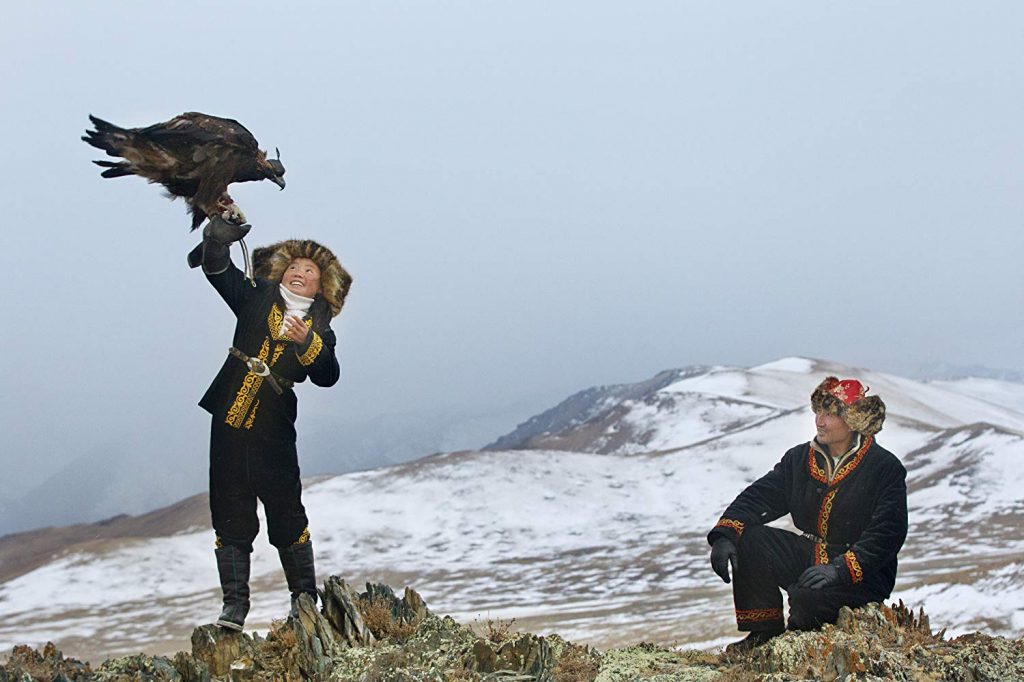
Aisholpan’s real-life father (Rys Nurgaiv) teaches his daughter to be an eagle huntress.
The Eagle Huntress has another protagonist that is not human, but certainly second only to Aisholpan. Of course, it is the eagle she captures and pairs with for the hunting and competition focus of the story. Keeping with ancient Mongolian/Kazakh traditions, Aisholpan takes a young Golden Eagle from its nest before it has learned to fly and trains it to hunt for her. The beauty of this tradition (before you get upset about the abducted eagle) is that the eagles are released from captivity, after a period of only four years. This ensures that the eagle will not only have a remaining long life in the wild, but will also be free to mate and produce (you guessed it) more eagles for future generations of eagle hunters! It’s a relationship between animals and humans, forged centuries ago, that respects the animal, allowing the cycle and symbiosis to continue. How often do those of us who don’t capture eagles for hunting otherwise contribute as much to the cycle of life for animals?
“In nearly every [scene], mother nature is the star, towering over her human subjects, yet elevating everyone in view to greatness with her.” ~ Chris Rennirt
Yes! An eagle is used by humans for hunting and, yes, animals die because they are hunted. Although no graphic images are shown on screen, it does happen, and more than one fox meets its end with the help of Aisholpan and her eagle. But, with that, the movie also makes us stop and realize (If we don’t already), that some people in the world, right now, still live in places without a Walmart, a Kroger, a Meijer or whatever grocery store chain pedals the food they eat. Some people in the most remote and coldest places on the planet must eat only what they can get from their environment–one most unyielding of food. Some people must eat not only animals, but they must eat all of the animals they hunt–the tongue, the brain, the stomach, the kidneys, the heart, the eyes (and everything else so many of us throw away)–because there is truly nothing else to eat. There are no vegetables, because the frozen ground will not grow them, and the stores are too far away to buy them. Some people, without artificial alternatives, must use the animal they hunt for clothing; they must use the fur to make coats, hats, and shoes they need to stay warm, and keep from freezing. Yes! The Eagle Huntress is yet another world culture lesson, reminding us that our geographic position in the world, in many ways, is not only a great convenience, but also a force that shapes our world view, as well as who we are as individuals…for better or worse. While it’s a seemingly common-sense point, it’s impact and reinforcement here is profound.
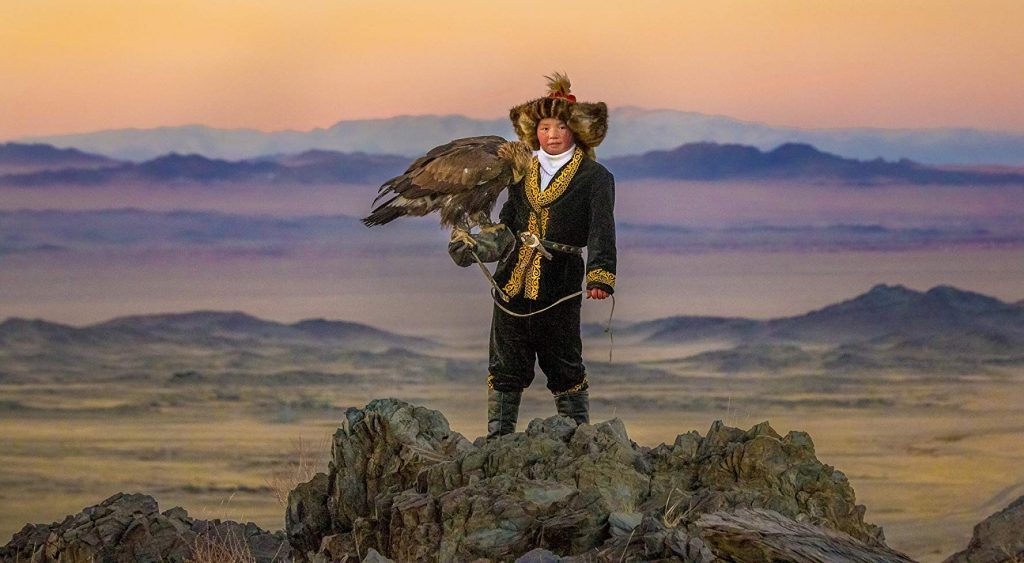
One of many breathtaking images from The Eagle Huntress, with Aisholpan, her eagle, and the beautiful Altai Mountains. (Photo by Asher Svidensky)
The believability of The Eagle Huntress is supported most superbly by the skillful narration of Daisy Ridley (Star Wars: The Last Jedi, 2017), whose tone is neither imposing nor too recessive in the story. She strikes a balance that is just right. Although she surely has opinions about the gender-biased culture and events she narrates, she keeps a voice that is neutral. Ridley is the executive producer of the film, as well as the voiceover artist for it; therefore, it makes sense that she would endeavor to be, as much as she naturally is, an outstanding narrator. While it generally works better to have a familiar voice telling a story, Ridley adds far more than just a familiar voice.
“It’s like a beautifully written book, instead of a book that just tells a story.” ~ Simon Niblett/Director of Photography for The Eagle Huntress
The photography of Asher Svidensky along with the cinematography of Simon Niblett are breathtaking high points of The Eagle Huntress, carrying the film to the summit of the Altai mountains, both metaphorically and literally. Their snow-covered immensity is the backdrop of scenes throughout the movie, giving us mother nature’s highest production values. The mountains emphasize the real-life enormity of nature, juxtaposed with the relative smallness of humans, let alone a child, who stands before them. They not only elevate, through metaphors, the achievements of Aisholpan, but also put the extreme coldness and harshness of the region at the forefront of our consciousness. They reinforce, in our world-culture experience here, the diversity of lifestyles elsewhere, and the awesome ability of humans to adapt. Almost any screenshot from the film is worthy of framing. In nearly every one, mother nature is the star, towering over her human subjects, yet elevating everyone in view to greatness with her. With Asher Svidensky’s photography, and the cinematography of Simon Niblett, the movie, like an eagle, truly soars! (For more, check out the featurette below: “The Eagle Huntress: Soaring Cinematography.”)
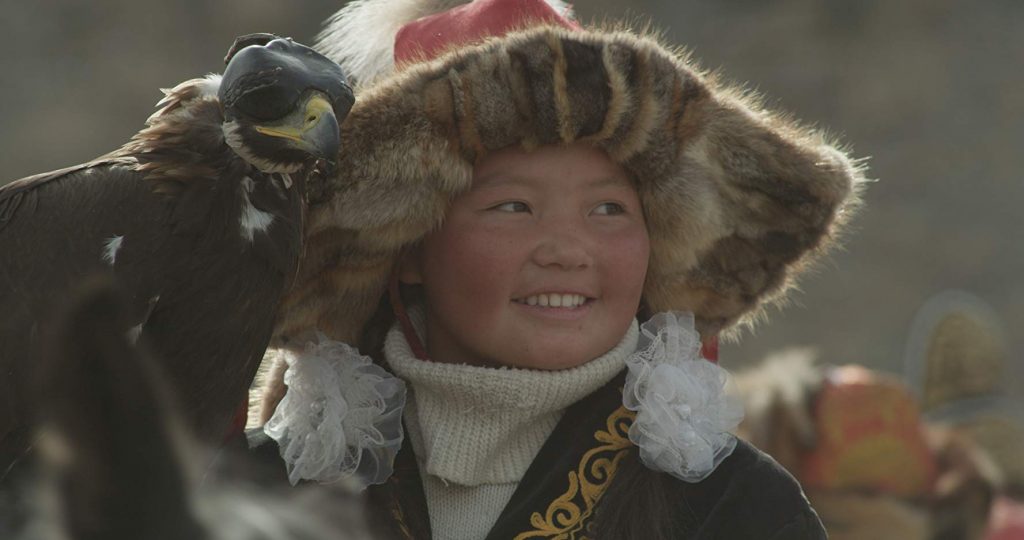
Adding ever more to the lofty heights of the movie is the main theme song (“Angel by the Wings”), heard in the end credits, and sung beautifully by Sia. Matching the ever-rising tone of Aisholpan’s confidence and boldness, the song melds with the movie as an ultimate complement. Yes! It’s one of those “goosebump” moments, when the credits roll in the end. The stirring chorus,”You can do anything,” repeated with triumph and power, is perfect!
“With Aisholpan, we easily believe the story she naturally reveals, not as a fictional movie, but as the true story of her life.” ~ Chris Rennirt
The Eagle Huntress (from Sony Pictures Classics) gets SJR’s highest recommendation, without exception, as a true “SJR Favorite.” I liked it so much that I found and bought myself a real eagle hunter’s hat. Yes! It’s not just any movie that makes me search for and buy a character’s accouterments–especially when they are damn expensive! Unless you dislike true-life films about people persevering to defeat the odds against them, endeavoring to be everything they aspire to, becoming the rare role model for us all, you should like The Eagle Huntress. If you like films that shine with personal empowerment, shattering generations of gender bias and stereotyping, you will like The Eagle Huntress. If you like films that teach a lesson in culture, taking you places you’ve never been, showing you a life unknown to most, you will like The Eagle Huntress. If you’re like me, you might even love it! Go look for it now! An eagle hunter’s hat might even be next on your list! Happy hunting!
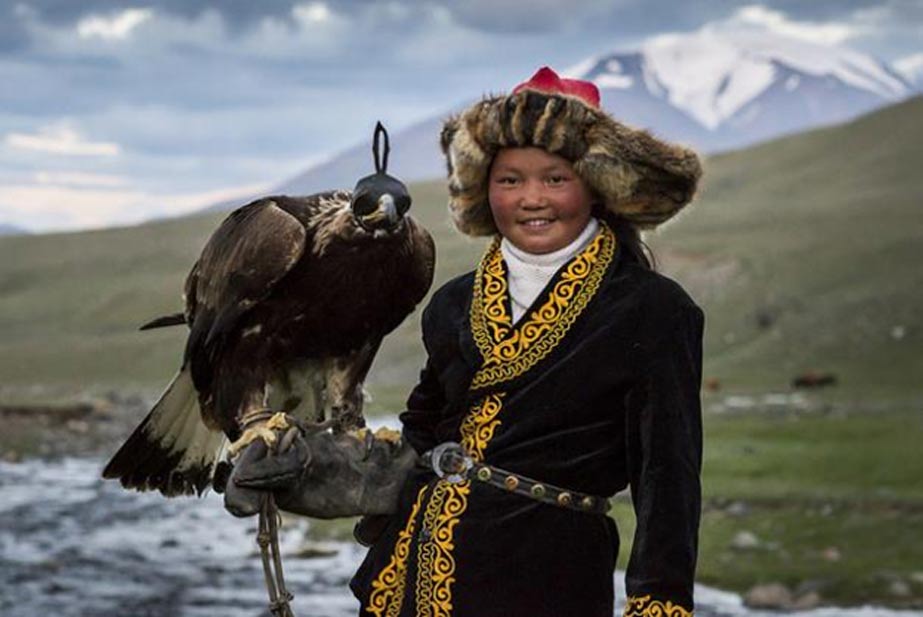
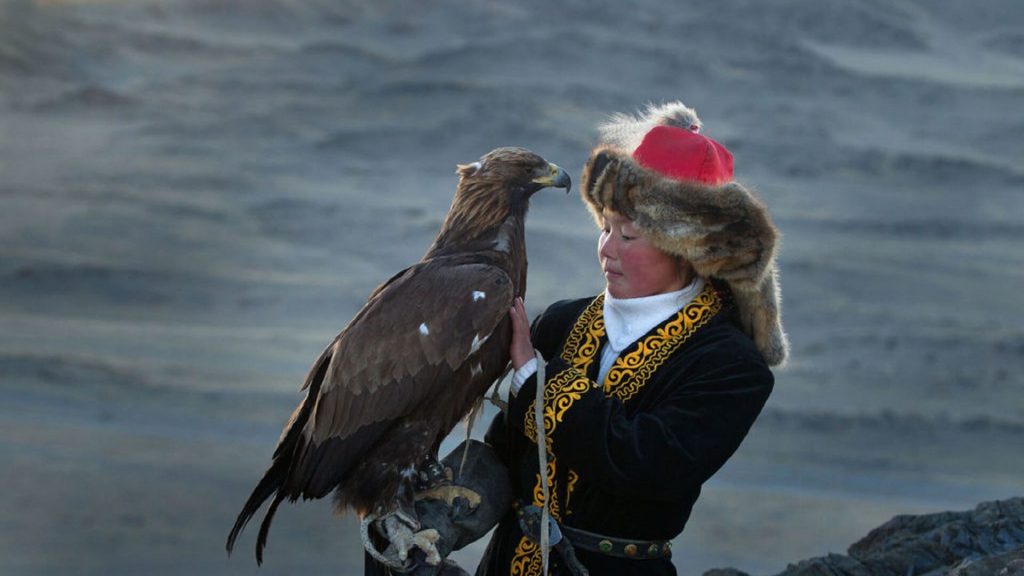
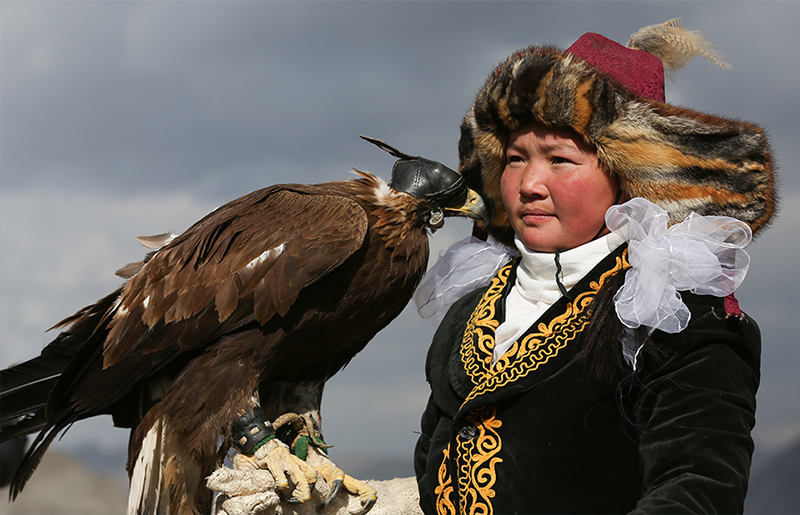
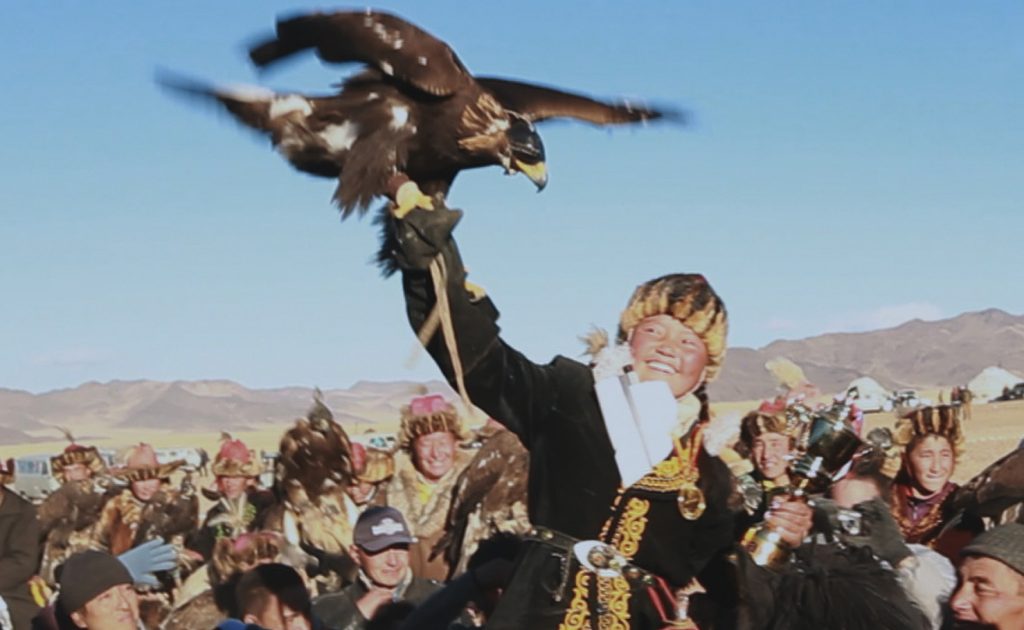
Chris Rennirt (the author of this review) is a movie critic and writer in Louisville, Kentucky, as well as editor in chief at Space Jockey Reviews. He has been a judge at many film festivals, including Macabre Faire Film Festival and Crimson Screen Film Fest, and he attends horror and sci-fi conventions often. Chris’ movie reviews, articles, and interviews are published regularly on Space Jockey Reviews and in Effective Magazine. His mission statement (describing his goals as a movie critic and philosophy for review writing) can be found on the “Mission” page, here at SJR. For more information about Chris Rennirt (including contact details, publicity photos, and more), click here.
You may also like these!

